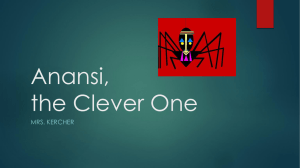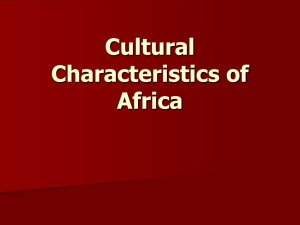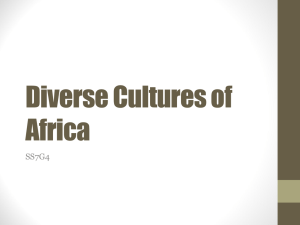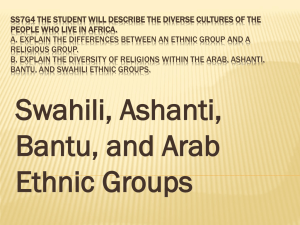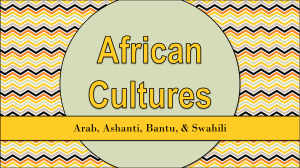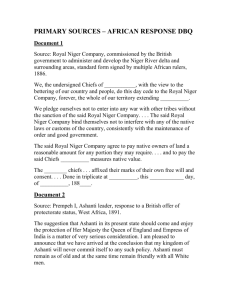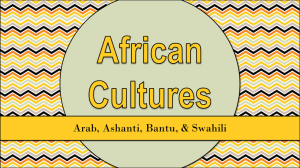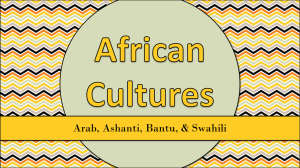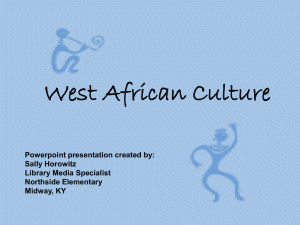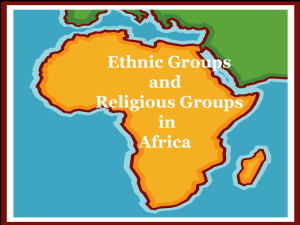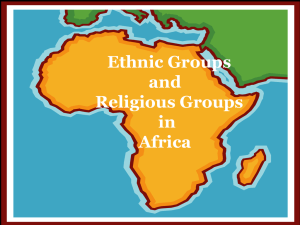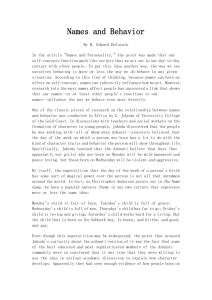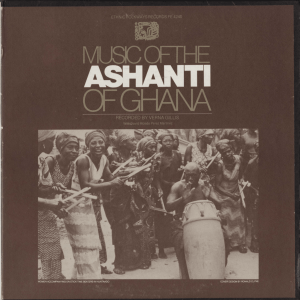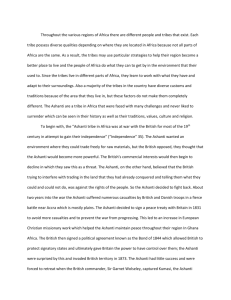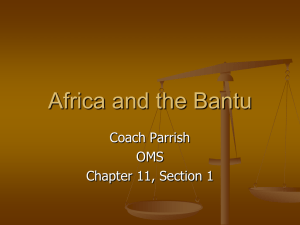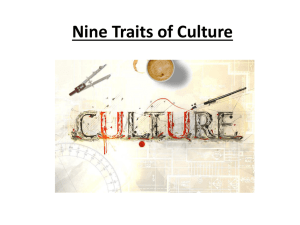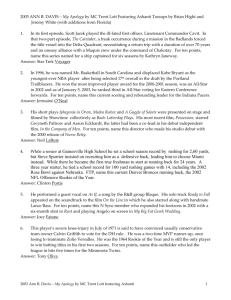Document 5275807
advertisement
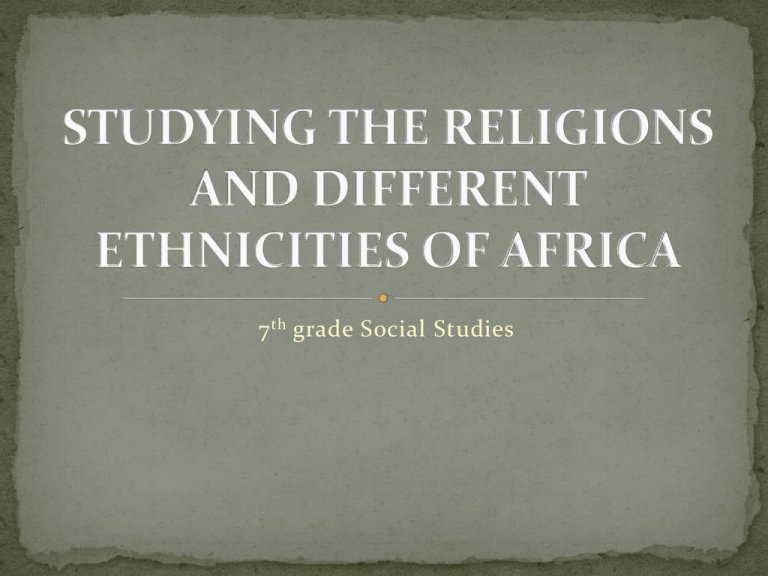
7 th grade Social Studies A. people who grow similar food B. people who share a language or religion C. people who share a belief in god or gods D. people who like to read the same literature A. people who grow similar food B. people who share a language or religion C. people who share a belief in god or gods D. people who like to read the same literature Ethnic Group – group of Religious Group – group people with the same culture traits Examples: Arab, Persians, Japanese, Ashanti of people with a common belief system (the same religion) Examples: Christians, Muslims, Hindus, Buddhists The Bantu-speaking people of Africa migrated in many different waves from the region just south of the Sahara Desert (Nigeria) to the central and southern parts of the continent beginning over 2,000 years ago. The desert was spreading The population was growing One of the largest movements of people in African history. The Bantu intermarried with other people such as the Pygmies. Bantu culture became widespread throughout Africa. Today over 60 million people speak Bantubased languages and share some part of the Bantu culture. They controlled trading routes from South Africa to the area north of the Zambezi River under the Munhumutapa Empire They traded many natural resources: gold, copper, precious stones, animal hides, ivory, and metal goods The empire collapsed in the early 16th century after using up all of its resources The Ashanti people are found in the modern country of Ghana. The Ashanti believe that their kingdom was founded in 1701 with the help of a holy man who produced a Golden Stool from the heavens and gave it to the first Ashanti king. The mother’s family is most important to the Ashanti They believe the strength of their nation depends on the safety of the golden stool The stool represents the unity of the Ashanti and the power of their chiefs Monotheistic – belief in one god, Nayme. Nayme’s children, the Abosom, represent all the natural powers and forces in the world. The traditional Ashanti believe that all living things have souls. They also believe that witches, demon spirits, and fairies have powers in the lives of men. Ancestors are given great respect, and there are a number of family rituals associated with the birth, coming of age, marriage, and death. Christianity – was introduced by Europeans and American missionaries beginning in the 1800s. Islam – Arab Muslims began to spread to North Africa in the late 600s AD, when the first Muslim armies arrived in Egypt. Most Arabs live in North Africa and the Middle East Arabs are divided into two groups – nomadic Bedouins and settled Arabs The Bedouin are several nomadic tribes who live in the deserts They move from one place to another in search of food and water Bedouin religion is a combination of polytheism (a belief in many gods), Judaism, and Christianity SWAHILI The Swahili community developed along the coast of East Africa when Arab and Persian (Iran) traders looking for profitable markets began to settle and intermarry with the local Bantu-speaking population. Practice a strict form of Islam They also believe in spirits, or djinns They use trances to speak to djinns Men wear necklaces that contain verses from the Koran Animists believe that spirits are found in natural objects and surroundings. They may feel a spiritual presence in rocks, trees, a waterfall or particularly beautiful place in the forest.
